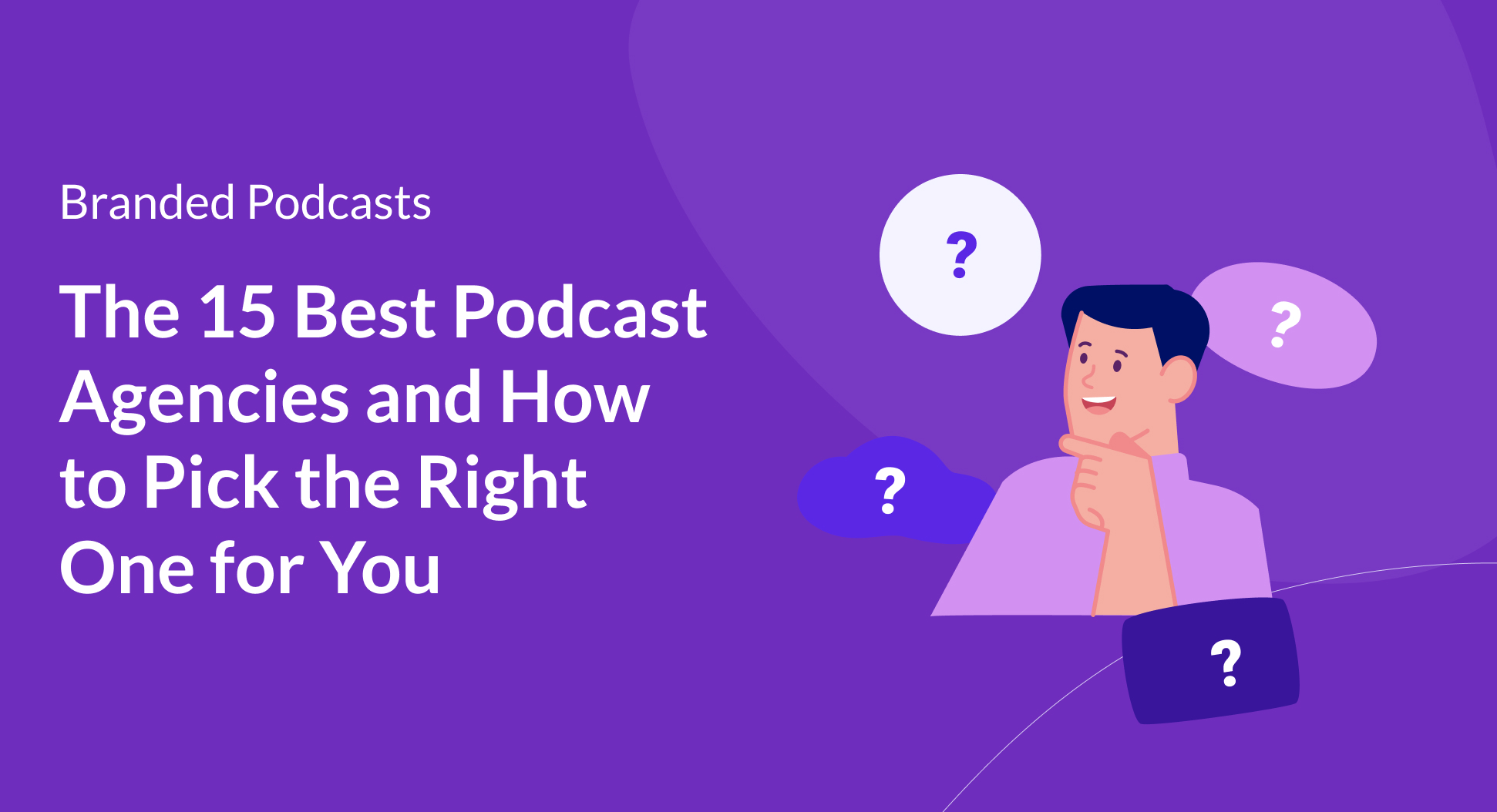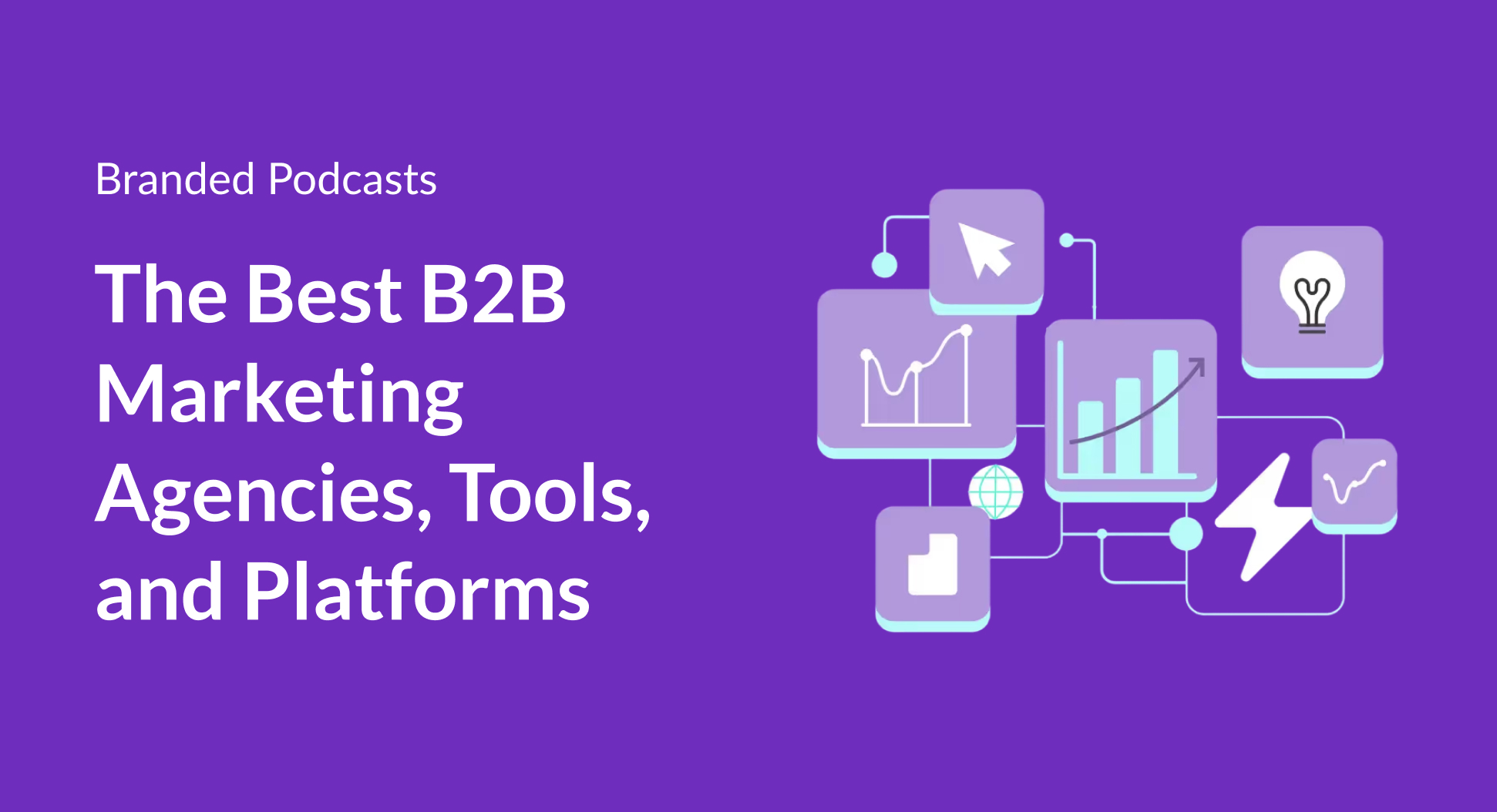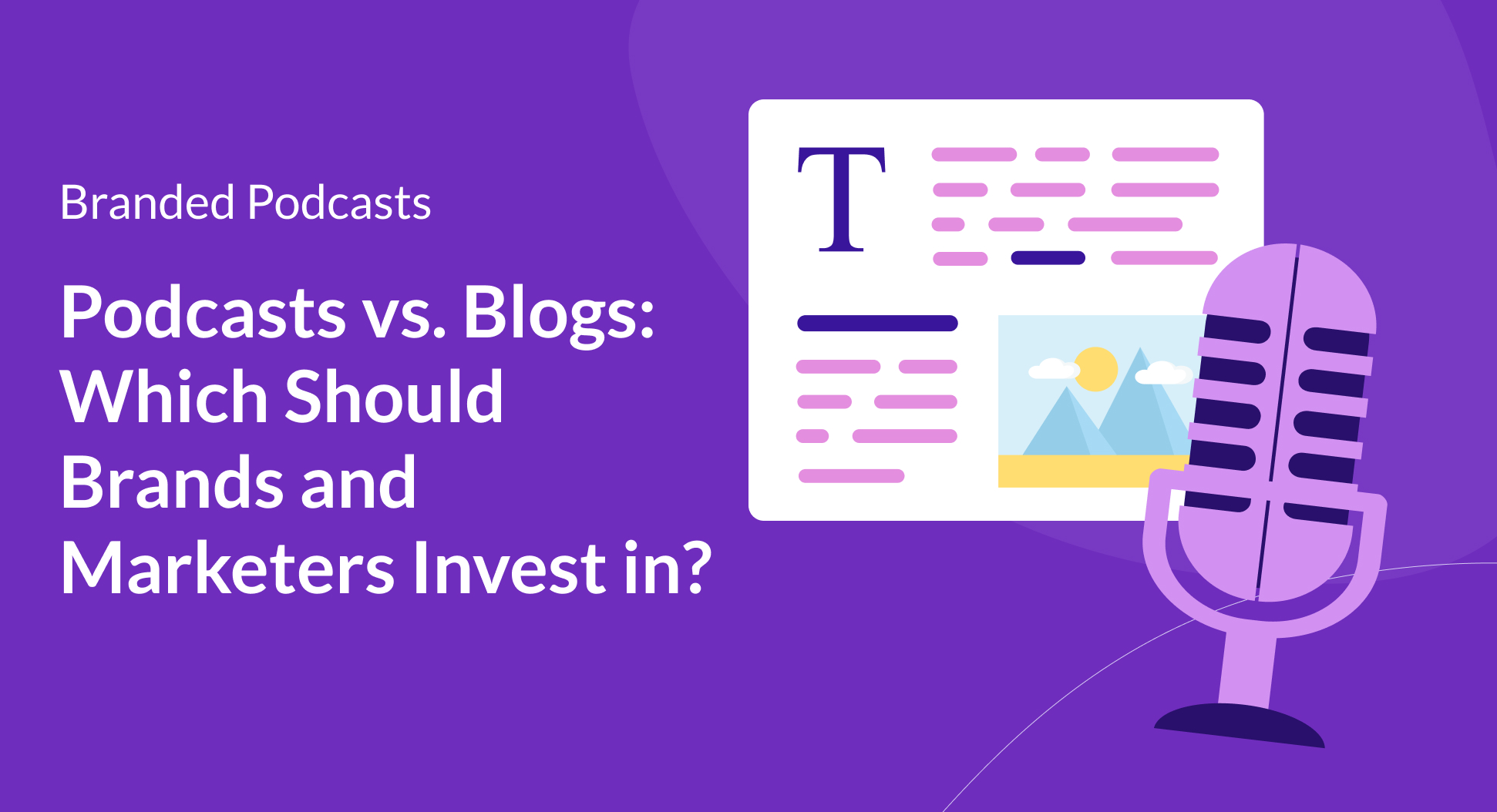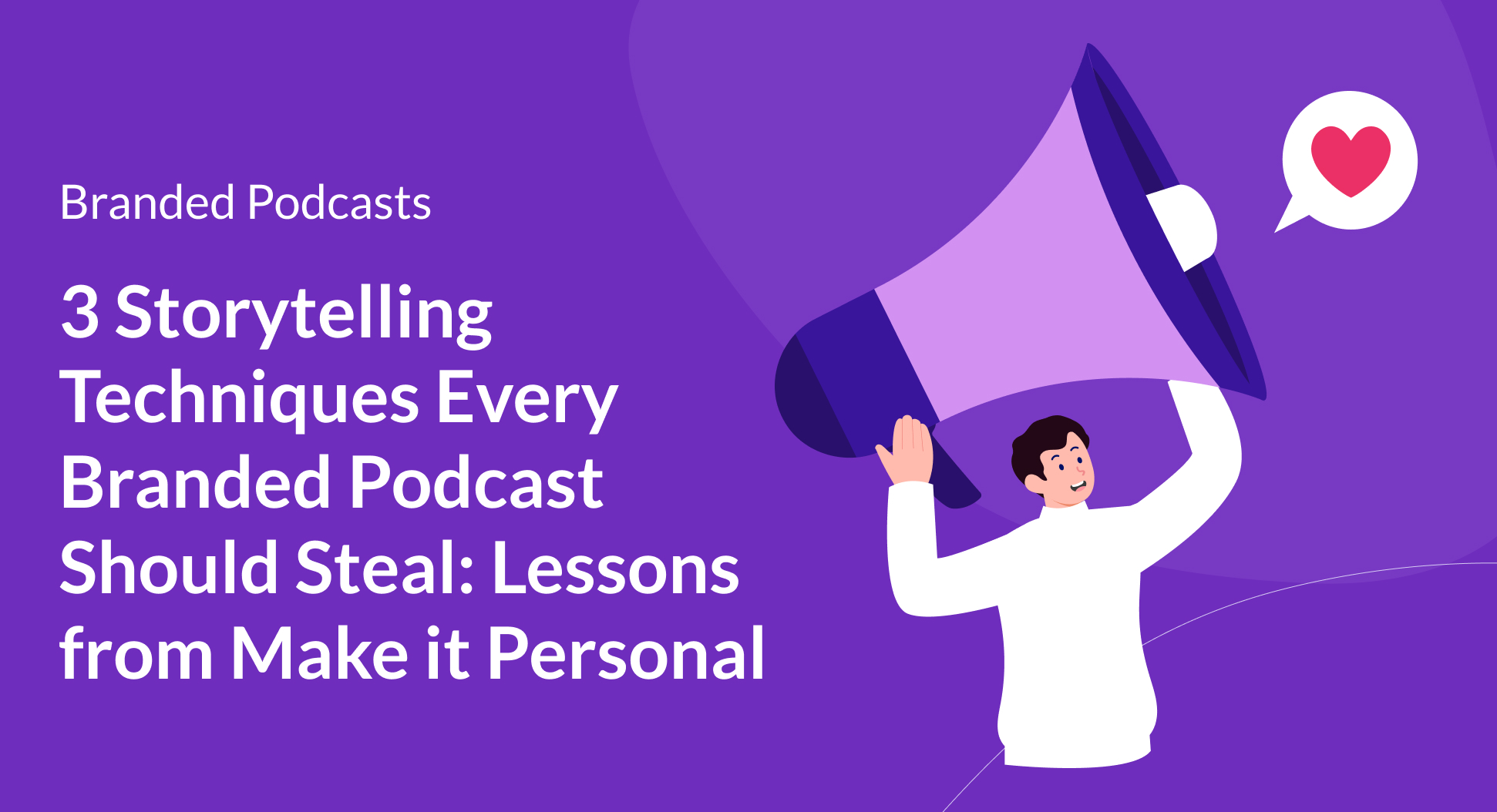Contents
When it comes to audio quality, here’s a good rule of thumb: don’t be the Blair Witch Project of podcasts.
The found-footage horror film, released in 1999, quickly became a cult classic, despite its seemingly low-budget production values. Its grainy, shaky cam shots and muffled audio contributed to the movie's chilling and immersive atmosphere, but let's be honest, it's not a production style you'd want to emulate for your podcast.
Just like the ill-fated filmmakers in the Blair Witch Project needed to invest in quality equipment to capture their vision, podcasters must ensure that their audio quality doesn't leave listeners lost in the auditory equivalent of those dark, twisted woods.
In this guide, we’ll highlight some of our top picks to help you create a high-quality podcast that delivers your message and provides a good listening experience to maintain a loyal fanbase.
Podcast equipment for brands
When it comes to producing your branded podcast, many companies will opt for working with a podcast agency. This allows you to have a vendor that covers areas such as strategy, podcast production, audience growth, and measurement, giving your team expert help and freeing up time.
Typically, your podcast agency will be able to purchase your equipment for you or at least point you in the right direction.
But whether you’re looking to get ahead or are producing your branded podcast in-house, this guide to podcast equipment will cover everything you need to create a high-quality show and have listeners coming back to that crisp audio.
Let’s get into it.
Microphones
Before we jump into specific mics our audio engineering team recommends, let’s quickly break down the two most common types of podcast microphones on the market:
- Condensers: These mics are very sensitive, but have great detail. We suggest using these types of microphones if you’re a voice artist or have a sound-treated room, like a studio. Because they are so sensitive, these mics will pick up your air conditioner or even your pet running around in the next room, so be mindful of that if you don’t always plan on recording in a very quiet space.
- Dynamic mics: If you’ve listened to the radio, you’ve heard these mics in action. They’re great for picking up sound close to the mic and cutting out anything else. We highly recommend these mics if you’re in a regular room that isn’t treated.
USB microphones
USB microphones are considered a great piece of podcast equipment for beginners because they’re the easiest way to record high-quality audio recordings on your computer and aren’t very expensive.
They are also highly portable – just plug it straight into the USB jack on your computer and it’s all set. Often USB mics also have a headphone output so you can hear the audio as you record.
Here are some USB microphone options we recommend:
- Shure MV7 is a fantastic dynamic mic with an XLR port, so if you ever upgrade your setup with an interface/mixer, you won't need to get a new microphone. Plus, it is a great option if you’re looking to reduce background noise.
- Blue Yeti is a very popular, affordable option for podcasters just starting.
- Rode NT-USB Microphone: If you’re looking to spend a bit more and level up from the Blue Yeti, this is a great high-quality USB option.
- Rode NT USB is a great, budget-friendly, microphone on the go. It comes with a filter and stand, and gives a good richness of sound.
XLR microphones
As your podcast grows, you can graduate from USB to XLR mics, which are more technical and offer more adjustability and capability.
The main difference between XLR mics and USB mics is the way they connect.
XLR mics have 3 prongs and therefore won’t connect directly to a computer. Instead, you'll need to plug your XLR mic into an interface like a mixer, and then plug the interface into your computer.
A key distinction between XLR microphones is whether they are condenser or dynamic microphones – which we explained above.
One thing to note when it comes to XLR mics, is some require a higher amount of power to sound good. So you'll want to double-check that your interface can provide the power required. If not, you'll need a CloudLifter adapter to give you a boost.
Here are some of our favorite XLR microphones:
- Shure SM58 is one of the most popular microphones in the world. They're affordable, sound great, and very durable. You could use it as a hammer to build a house and it would still work. There's a reason why these dynamic mics are a top choice for live music venues and remote broadcasts.
- Sennheiser XS 1, similar to the Shure sm58, the Sennheiser XS 1 is another top choice for radio and podcasters.
- MXL 990 Condenser Microphone is an affordable option if you’re looking for a condenser XLR microphone.
- Rode Procaster Broadcast Dynamic Vocal Microphone sits on the more expensive side but is another great dynamic microphone option.
- Shure SM7B is the poster boy for higher-end podcasting mics. It is well known for emphasizing small details and depth in the human voice and drowning out any distractions.
- SM7db is an upgrade to Shure’s most popular microphone, the SM7B. This microphone has a built-in pre-amp which is ideal for almost any interface. It also has a simpler setup. It’s a dynamic microphone, that’s able to isolate the voice, and will not pick up a lot of background noise
- The Electro-Voice RE-20 is another popular option for high-end podcasting and music recording.
If you’re looking for the best of both worlds, we highly suggest a hybrid mic, which can act as both a USB or XLR mic. We suggest the Samson Q2U and the Audio-Technica AT2005.
Microphone stands
A mic stand keeps your microphone stable and the shock mount will minimize background noise that you may not even notice.
For example, typing on the computer is a minor sound, but the microphone will still pick it up. Using a shock mount helps to keep the impact of noises like that to a minimum (so you can be taking those notes in the background while going unnoticed).
Here are some mic stands we suggest:
- Rode PSA 1 boom arm includes two desk mount options and can rotate 360 degrees. It is one of the top-selling and highest-rated mic stands on Amazon.
- VIM VIP 3-in-1 cell phone and microphone stand is a nice option because if you have content you want to refer to on your cellphone while you’re recording, you can position it above the microphone.
- On Stage DS7200B is another affordable microphone desk stand. In terms of purchasing the right shock mount, usually, the company that you buy your microphone from will offer one that is compatible.
- Rode PS1 is a versatile boom arm that you can easily mount onto your desk.
Pop filter
A pop filter is a little filter made out of metal mesh or perforated metal that you put over a microphone. They help to prevent that popping sound that comes from air blasts when you pronounce certain words – plosives such as “p” and “b” sounds.
This piece of equipment helps to make your show sound more professional. No need to make a big fuss over this piece of equipment, you can simply purchase the pop filter with the best reviews on Amazon.
We do caution, however, that pop filters aren't a perfect tool for preventing pops, but they do a good job of forcing you to not get too close to your mic.
Some of those harsh “p” and “b” words can be edited in post-production but only to a certain extent. So making the small investment for a pop filter is well worth it.
Headphones
This may seem like a simple piece of podcast equipment but don’t underestimate how important a good pair of headphones can be to your podcast recording.
For instance, you’ll want to make sure your mic is picking up voices properly while minimizing background noise, so you’ll need to have a decent pair of headphones on.
Ultimately, wearing headphones is one of the simplest ways to monitor sound quality.
There are several inexpensive and premium headphone options that you can choose from depending on your preferences regarding sound quality, comfort, noise cancellation, and more.
Here are some top options:
- Beyerdynamics DT 880 is our audio engineer, Dillon Moore’s top pick. “They keep an extremely neutral sound and don’t color audio at all.” he says “Some headphones will boost or reduce the bass, which makes mixing and mastering difficult because what you hear will be slightly different than what you would hear with other headphones.” On top of that, these headphones are open back, so they’re extremely comfortable to wear for longer periods.
- Grados are another great option. A music composer who made the original music for This American Life said they were the best headphones he’s ever used. They’re known for providing a very natural sound.
- Audiotechnica m20x is a very good option if you’re looking for a more affordable pair of headphones.
Overall, we can’t reiterate enough how important it is to use a pair of headphones. Even in a crisis if your favorite pair of headphones broke 10 minutes before a recording, grab a pair of Apple headphones to put on.
Recording devices
If you’re not ready to invest in a microphone, there are other pieces of podcast equipment you can use to record and store your audio.
Smartphones really can do anything these days, even record your podcast episodes. You can typically do this straight through a recording app on your smartphone. Another option is to use your computer's microphone to record your episodes directly and store them right on your computer.
Alternatively, you can consider purchasing an actual digital recorder. This type of recorder is especially useful if you want to record or conduct interviews on the go.
Some popular options are:
- Zoom H1 Handy Recorder is affordably priced and delivers high-quality recordings.
- Tascam DR-05X is another affordable and highly-rated option.
But having a quality microphone and recording device whether that be a laptop or digital recorder are your best options.
XLR mic interface
This is another piece of podcast equipment that you can use if you’re recording with an XLR mic. It converts the analog signal from your microphone into a digital signal that your computer can then understand.
Please note that if you’re using a USB mic, you won’t need an interface.
Here are some trusted interface options:
- Focusrite Scarlett Solo is an affordable option as far as XLR microphone interfaces go. Focusrite Scarlett is the industry standard and if you need to record two voices, we suggest the 2i2.
- Focusrite Vocaster has more capabilities than Scarlett. For instance, it allows you to run an AUX cord to play elements off your laptop and has a Bluetooth connection if you want to connect your phone. Plus, this option has enough power to boost the more demanding XLR mics; whereas the Scarlett does not.
- Mackie Onyx Blackjack 2×2 is another affordable option.
- Vocaster Studio 2 allows you to hook up your phone to play music or SFX via Bluetooth. Plus, you’re able to dial in people and record them from the vocaster.
Audio mixer
Audio mixers aren’t necessary for recording your podcast episodes. They are similar to interfaces in the sense that they convert the analog signal from your microphone into a digital signal, but they also give you more control over audio levels and other aspects of the sound.
However, we do caution that not all mixers can replace an interface. Some analog mixers need to be run through an interface.
Beyond that, you may want to use a mixer if you’re using more than one mic. Lastly, a mixer is useful if you want to record your podcast episode in real-time and want the ability to add elements like sound effects and music live.
Here are a couple of mixers you can’t go wrong with:
- Behringer Xenyx Q802USB is a classic favorite among podcasters for a reason.
- Mackie ProFX8v2 is a great beginner-friendly option.
- Rodecaster Pro Mixer lets you simultaneously record on the mixer and your computer. For live podcast productions, you’re able to program music and SFX and trigger them when you want. Plus, you’re able to process your voice and make it sound broadcast-ready easily.
Podcast post-production: Editing
This particular piece of the equipment puzzle may not be as obvious, but after you record your podcast episodes, you'll likely want to edit out parts of the audio, add music, and more.
To do this, you need to either find a free tool or purchase a piece of software to help you edit.
There are many options to choose from, including:
- Garageband included free with Apple devices, may be primarily designed for music production but offers podcast-specific functions as well. One nice feature of this application is that it includes a complete library of sound effects to add to your show.
- Pro Tools has been the industry standard for decades; however, it is not always the most user-friendly and can be very experienced – even if you just pay a monthly fee.
- Reaper is extremely customizable, so you can tailor it exactly how you want; however, this can also make it a bit complicated to use. There is a free option and an affordable paid tier.
- Audacity is one of the best free software. Plus, it's open source, which means it will always be free to use. Most people in sound design start with Audacity and many, even decades later, exclusively use this editor.
- Descript is an all-in-one podcast and video editor. It has a free option or affordable Creator and Pro options for just $12 and $24 a month.
- Adobe Audition allows you to edit, mix, record, and restore audio. Plus, you can create, mix, and design sound effects.
Quill Tip: If you’re interested in a comprehensive review of the best free podcast editing software, check out our complete guide.
Working with a podcast agency
As we mentioned earlier, all areas of the podcast production process can easily be covered by your podcast agency.
At Quill, we ensure all clients and guests have the equipment they need before joining any episode recording. We’ll also work with your host and guests to prep them before the interview, ensuring they’re as comfortable and confident as possible since confidence brings the best sound and content quality.
If you’re interested in exploring what working with a podcast agency could look like, chat with our team at Quill!
Ready to get started?
The right podcast equipment is paramount to delivering high-quality audio content that captivates your audience.
Whether you're a seasoned audio pro or just starting, investing in quality microphones, headphones, audio interfaces, and editing software is crucial.
With the right tools and knowledge, you're well on your way to crafting engaging and professional podcasts that will leave a lasting impact on your listeners.
Enjoyed this article? Stay up to date on all things branded podcasts by signing up for The Branded Podcaster, our bi-weekly newsletter that’s educating leading marketers and brands on their audio strategies.


.avif)

.avif)




.png)

.png)




.png)
.png)
.png)
.png)